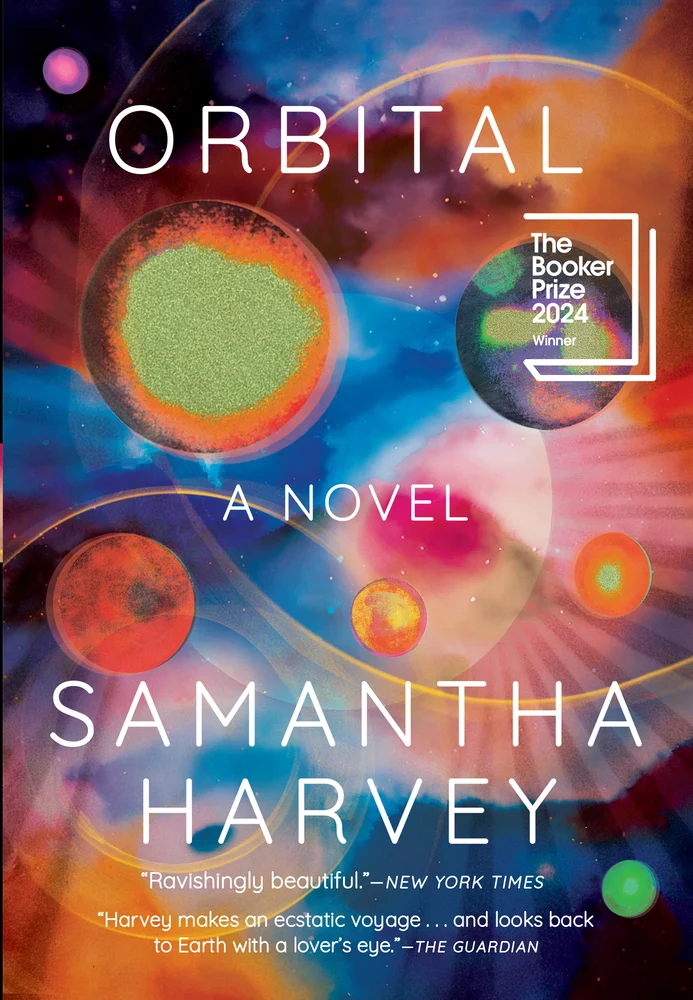Film by CÉLINE SCIAMMA
Review by HANNAH GERSEN

Petite Maman, Céline Sciamma’s fifth feature-length film, following 2019’s critically acclaimed Portrait of a Lady on Fire, is a time travel story that reminded me of one of my favorite movies from childhood: Back to the Future. Aesthetically, the two have very little in common—one is an art house movie with unknown child actors, the other a somewhat goofy studio feature starring Michael J. Fox—but at the narrative core of both films is a deep psychological wish that many children harbor: to know their parents when they were younger. In Back to the Future, a teenage Marty McFly accidentally travels back in time to meet his parents at the beginning of their high school romance. In Petite Maman, eight-year-old Nelly stumbles into a kind of woodland passageway through which she can visit her mother’s childhood and play with her mother as an eight-year-old girl. In this alternate reality, Nelly also interacts with her maternal grandmother who, in Nelly’s present-day timeline, has recently passed away.
Petite Maman opens in a nursing home, after the grandmother’s death. Nelly’s mother, Marion, has just finished cleaning out her mother’s room in the care facility and is getting ready to return to her childhood home with Nelly and Nelly’s father. Together, they will empty out her mother’s house. It’s a depressing job for Marion, but Petite Maman is firmly in Nelly’s point of view, so our understanding of Marion’s grief is limited to what her daughter can see and intuit. In an early scene, when Marion is driving to Nelly’s grandmother’s house, the camera shows us Nelly’s back-seat view of Marion’s eyes in the rear-view mirror, a shot that took me right back to childhood. Nelly reaches around the front seat to feed her mother some of her snack, trying to comfort her and maybe also, to bridge the divide between them. It’s a subtle foreshadowing of what is to come.
When they arrive at her grandmother’s house, Nelly wants her mother to take her into the woods and show her where she used to play as a child, but Marion is too busy sorting through her mother’s remaining possessions. Nelly plays by herself and looks through her mother’s childhood notebooks and toys After just one day in the house, Marion departs unexpectedly to return to the city, leaving Nelly alone with her father to finish cleaning up. It’s then that Nelly discovers the secret hiding place where her mother used to play. She also meets a little girl named Marion who is the same age as Nelly and looks just like her. When Nelly visits Marion’s house, she finds herself in the same house that her parents have been tidying, except it is furnished, and Nelly’s grandmother is living there as a middle-aged woman. It’s a potentially creepy set-up that Nelly at first can’t quite believe, but after a little detective work, she accepts it with wonder and excitement rather than fear.
Because the appearance of young Marion occurs after older Marion disappears, one reading of the movie could be that Nelly’s mother has drifted into the past, emotionally, and Nelly follows her there, in a metaphorical way. But I prefer to take the encounter literally, and I think Sciamma means for it to be taken at face value, because in the scenes that follow, the two little girls are aware that they are crossing a temporal boundary and regard it as something that is within the realm of possibility. When they visit each other’s houses, they are visible to the adults in the past and in the future. The adults in each timeline—Marion’s mother in the past, and Nelly’s father in the future—accept the appearance of the new neighbor girl without very many questions. Marion’s mother seems to have an immediate connection to Nelly, her future grandchild, and remarks that Nelly has the same name as her mother. Likewise, Nelly’s father gazes at Marion with a kind of confused fondness, as if he’s trying to figure out how he knows this child who looks so much like his daughter.
Nelly and young Marion are played by twins, Josephine and Gabrielle Sanz, who have a serene affect that sometimes comes off as flat. They aren’t the most revealing actors and are at their best when playing together in scenes that seem to be improvised. Sciamma, who wrote the screenplay, occasionally gives them lines bordering between the profound and simplistic, and the girls don’t always pull them off. But at other times, the girls land accidental insights quite easily, as in a scene when Nelly remarks that she is going to fall asleep as quickly as she can so that she can time travel to the morning. It’s just the kind of thing a kid would say, while also dovetailing with the movie’s larger themes.
For me, the images of the two girls playing together were more emotional than anything they could possibly say to each other; there was something so magical in the idea that these two girls, who look to be the same age, are actually mother and daughter. In being released from their conventional roles, Nelly and Marion can relate to each other as individuals, and their freedom is reflected in their unfettered play outside, without adult supervision. Working with cinematographer Claire Mathon, who Sciamma also collaborated with on Portrait of a Lady on Fire, Sciamma pulls the camera back when the children are outdoors, so that they are small figures in the woods and fields. Indoors, she gets close to the twins, especially when they are playing an imaginary game where the girls pretend to be grown-ups. We see the passage of time most clearly indoors, where the house in the present-day timeline is nearly empty, with faded wallpaper and a bare kitchen. In the past, the house is colorful, with furniture and art on the walls, food in the pantry, and toys and books in Marion’s room. The wooded backyard functions as a timeless space; it doesn’t change over the years, and it makes sense that the outdoors is the place where the girls can move freely between time zones.
There is almost no music in the soundtrack, adding to the feeling of spaciousness and stillness, though there is one scene, near the end of the film, when Nelly takes her Walkman into the woods and lends her headphones to Marion so that she can hear “the music of the future.” What Marion hears is not a familiar pop song, but an ecstatic electronic and choral track that Sciamma commissioned for the film. The music becomes the soundtrack for their last outing together, giving it an intensity fitting for their final moments in each other’s company.
The arc of Petite Maman is emotional, and can’t exactly be spoiled, but there are certain aspects of Marion’s past that become clearer as the two girls play, and which shed light on her sudden departure. The film is resolved very simply, after a little over an hour, with a scene that brought sudden, surprising tears to my eyes—surprising because this is a story with very little tension. It’s a gentle succession of images. In a recent interview for a New Yorker profile, Sciamma describes a breakthrough that she had in making Portrait of a Lady on Fire, a realization that she did not have to structure her narrative according to the traditional rules of screenplay writing, in which there is a protagonist and an antagonist in conflict with each other. Instead, she could just give the characters what they want, and see what shape the story takes after that.
Reading this interview, I realized that Sciamma’s approach to time travel is unique because she has taken the conflict out of the narrative. In most time travel movies, the time travel itself is problematic; the conventional logic is that a person from the present can’t interact with a person from past without altering the present-day timeline. This reasoning sets up the conflict of Back to the Future, in which Marty McFly’s presence in his mother’s teenage life is so destabilizing that his own future existence is threatened. In Petite Maman, Nelly’s problem—that her mother is emotionally distant after the death of her own mother—is actually solved by time travel. Sciamma allows Nelly to explore the past and present freely, the way a realist novel might, to excavate character and give context to present-day events. What emerges is a portrait of three generations of women, whose connection and affinity for one another reverberate across time.
Hannah Gersen is the author of Home Field and a staff writer at The Millions. She writes about movies on her blog, thelmaandalice.com, and a monthly newsletter: https://thelmaandalice.substack.com.




